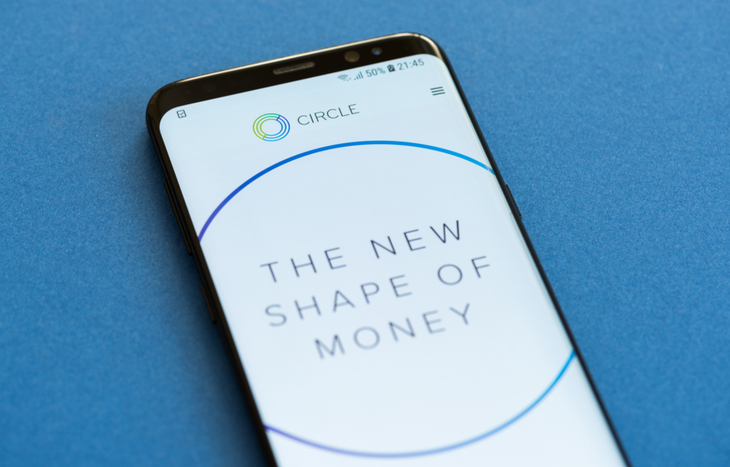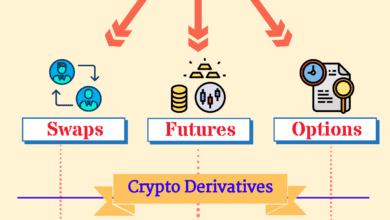Circle IPO: Major Opportunities and Challenges Ahead

Circle IPO is generating significant buzz as Circle Internet Group Inc., the leading stablecoin operator, prepares for its much-anticipated initial public offering. With an S-1 filing revealing major growth and a robust revenue forecast, this move could position Circle at the forefront of the rapidly evolving digital finance sector. As the issuer of the popular stablecoin USDC, Circle’s entry into public trading represents a pivotal moment in a landscape increasingly shaped by cryptocurrency regulation and acceptance. The company’s strategic collaborations with established financial institutions indicate its commitment to bridging the gap between traditional finance and innovative digital assets. As investors keep a close eye on how Circle navigates the challenges ahead, its impact on the cryptocurrency market and broader financial ecosystem will certainly be observed closely.
The upcoming Circle IPO marks a transformative step for Circle Internet Group Inc., a prominent player in the cryptocurrency realm known for issuing the stablecoin USDC. As the company files to go public, it opens up discussions about the potential for stability in digital finance amidst evolving regulatory landscapes. By embracing an initial public offering, Circle aims to capitalize on its substantial revenue growth while reinforcing its partnerships with traditional financial players. This strategic maneuvering demonstrates how federal oversight is shaping the future of blockchain technology and its integration into mainstream finance. The implications of Circle’s public trading aspirations extend beyond mere profitability; they signify a crucial shift in how digital currencies like USDC might influence global economic structures.
Circle’s IPO and Its Implications for Digital Finance
Circle Internet Group Inc.’s announcement of its intention to pursue an initial public offering (IPO) marks a significant step in the evolution of digital finance. As the issuer of the stablecoin USDC, Circle aims to elevate its visibility in traditional financial markets, all while navigating the complexities of cryptocurrency regulation. The S-1 filing not only highlights its impressive revenue growth but also underscores the challenges faced by companies at the intersection of tech innovation and regulatory scrutiny. Such a move can potentially reshape investor perceptions, as Circle transitions from a private entity into a publicly traded company.
The Circle IPO is particularly timely given the landscape of digital assets, where cryptocurrencies are gaining traction with both enterprises and consumers. The firm’s strategic moves could influence the broader acceptance of stablecoins in financial transactions, especially as regulatory frameworks start to solidify. By going public, Circle may enhance its credibility among institutional investors who are looking for compliant and stable digital finance solutions that align with their operational needs in a volatile market.
Growth Trajectory of Circle and USDC
Circle’s phenomenal growth trajectory is illustrated in its S-1, showcasing an increase in revenue from $15.4 million in 2020 to a projected $1.7 billion in 2024. This surge aligns with the rising demand for USDC, evidencing how businesses and consumers are leaning toward faster and more cost-effective payment methods in the digital environment. Digital finance is experiencing an accelerated pivot towards stablecoins, and USDC stands out as a reliable option amid fluctuating cryptocurrency markets, benefiting from its association with established partners like Visa and Mastercard.
As the digital finance sector continues to evolve, the stability provided by USDC presents a compelling case for adoption among organizations seeking to harness the operational efficiencies offered by blockchain technology. The growth of USDC highlights a broader trend of integrating digital currencies into everyday financial systems, which could soon revolutionize traditional banking practices and enhance cross-border transactions.
Strategic Partnerships and Institutional Engagement
Circle’s S-1 filing emphasizes the critical importance of strategic partnerships in its business model, particularly with companies such as ICE, Visa, and Stripe. These relationships not only bolster USDC’s positioning within established payment channels but also reflect a concerted strategy to engage deeper with institutional clients. By embedding itself in global payment infrastructures, Circle aims to facilitate the acceptance of stablecoins within traditional financial systems, which is vital for its long-term success in a competitive landscape.
Such partnerships are essential for enhancing liquidity and ensuring the seamless operation of USDC across various platforms. As the financial world increasingly pivots to digital currencies, the strategic alliances Circle has forged could provide a competitive edge, driving higher adoption rates and ensuring that USDC remains a critical player in the cryptocurrency market amidst regulatory challenges and competition from other stablecoin issuers.
Navigating Regulatory Challenges in Crypto
The current climate of cryptocurrency regulation presents a dual-edged sword for Circle. While the overall regulatory framework is becoming clearer, ongoing ambiguity remains, particularly in the United States. The potential impact of diverging legislative views could create hurdles for Circle’s operations, making its IPO a complex venture. Uncertainties surrounding regulatory compliance could affect not only Circle’s strategy but also public sentiment towards digital currencies, which are teetering on the brink of mainstream acceptance.
The turbulence experienced in the crypto market in 2023, including banking failures that briefly impacted USDC’s price, serves as a stark reminder of the vulnerabilities inherent in the digital asset space. To weather such storms, Circle must not only navigate existing regulatory landscapes but also prepare for future changes, which could reshape its operational playbook and strategic initiatives.
Circle’s Revenue and EBITDA Performance
Circle’s financial performance, as highlighted in its S-1, is impressive, with reported net income of $156 million and an adjusted EBITDA of $285 million for 2024. Such figures solidify Circle’s position as a key player in the digital finance arena, reflecting the growing trust in its stablecoin, USDC. The revenue composition has increasingly relied on fees generated from transaction volumes and partnerships, showcasing a sustainable business model that thrives in a growing digital economy.
The ability to maintain robust financial metrics amidst a competitive environment is crucial for Circle as it approaches public trading. Stakeholders will be closely watching how these numbers evolve, particularly as regulatory pressures mount. Analyzing Circle’s financial health not only informs investors but also signals to the market the viability and resilience of stablecoins, which play a crucial role in the broader cryptocurrency ecosystem.
Impact of Market Competitiveness on Circle
In the ever-competitive landscape of cryptocurrencies, Circle faces challenges from rival stablecoin issuers, notably Tether and others vying for dominance. Although USDC is currently the second-largest stablecoin in circulation, maintaining this position requires steady innovation and strategic marketing to draw users away from competitors. The S-1 acknowledges these pressures while also outlining Circle’s strategies to amplify USDC’s utility and presence in global financial transactions.
As the stablecoin market matures, Circle’s ability to differentiate USDC through unique features, compliance with regulatory standards, and strategic partnerships will be vital. The competitive dynamics within the cryptocurrency landscape not only influence market strategies but also serve as a litmus test for the broader acceptance of blockchain technologies in modern finance.
International Expansion and Regulatory Considerations
Circle’s ambitious plans for global expansion are evident as it navigates the complexities of entering new markets, particularly in Europe. The establishment of operations under electronic money token regulations opens new revenue streams and growth opportunities for Circle’s USDC. However, the diverse regulatory landscapes across jurisdictions can present operational challenges that the company must adeptly manage to ensure compliance while adhering to varying local laws.
This international approach not only broadens Circle’s market potential but also underscores the importance of understanding local regulatory environments. As digital finance continues to globalize, how Circle adapts its strategies to meet these requirements will be pivotal in enhancing its global footprint and sustaining the growth trajectory of USDC.
Reserve Strategy and Liquidity Management
Circle’s S-1 filing provides valuable insights into its reserve strategy and liquidity management practices, which play a critical role in upholding the stability of USDC. The company relies on interest from reserve assets as a significant income source, which renders it sensitive to shifts in the broader monetary policy landscape. By maintaining a robust reserve strategy, Circle ensures that USDC remains fully backed and trustworthy among users in a landscape often characterized by volatility.
Transparency regarding reserve management not only bolsters user confidence but also fulfills essential regulatory and reporting requirements. As Circle prepares for its IPO, demonstrating sound liquidity management will be crucial in attracting prospective investors who are keen on understanding the mechanisms that sustain USDC’s value and reliability.
The Future of Circle in the Digital Economy
Looking ahead, Circle’s strategic initiatives and market position suggest promising potential within the digital economy. As the world increasingly adopts digital currencies and blockchain technologies, Circle is well-positioned to leverage its existing infrastructure and partnerships to capture emerging opportunities. The momentum behind USDC, combined with continuous innovations in digital finance, places Circle in a favorable position to lead in the evolving cryptocurrency landscape.
To sustain growth and adapt to the rapidly changing digital finance environment, Circle must remain agile and responsive to market trends and regulatory developments. The outcome of its IPO may serve as a litmus test for the broader acceptance of stablecoins within traditional finance, which could further catalyze innovation and investment in the digital economy.
Frequently Asked Questions
What is the Circle IPO and how does it relate to USDC?
The Circle IPO refers to Circle Internet Group Inc.’s plans for an initial public offering, aiming to become a publicly traded company. This move is closely tied to the firm’s role as the issuer of the stablecoin USDC, which is central to its business model in the digital finance sector.
How will the Circle IPO impact the digital finance landscape?
The Circle IPO is expected to significantly impact the digital finance landscape by enhancing the legitimacy of stablecoins like USDC within traditional financial markets. As Circle aims to integrate blockchain technology and foster partnerships with established financial institutions, this move could advance broader acceptance and utilize digital currencies in mainstream finance.
What challenges does Circle face during its IPO process?
Circle faces several challenges during its IPO process, including regulatory uncertainties surrounding cryptocurrency regulation that could affect operations and public perception. Additionally, competitive pressure from rival stablecoins, and maintaining USDC’s long-term stability amid market turbulence are significant hurdles.
How does Circle’s revenue growth relate to its IPO prospects?
Circle’s impressive revenue growth—from $15.4 million in 2020 to a projected $1.7 billion by 2024—bolsters its IPO prospects by showcasing strong market demand for USDC. This financial performance could attract investors looking for growth opportunities in the cryptocurrency space and digital finance.
What role do partnerships play in Circle’s IPO strategy?
Partnerships with major financial entities such as ICE, Visa, and Mastercard are crucial to Circle’s IPO strategy. These collaborations help integrate USDC into global payment infrastructures, enhancing its value proposition and market presence, which are likely to be highlighted to investors during the IPO process.
How might Circle’s IPO affect cryptocurrency regulation?
Circle’s IPO could potentially draw more attention to cryptocurrency regulation, as its public trading may prompt regulators to refine and clarify existing digital finance laws. This could lead to more structured frameworks benefiting stablecoins like USDC and fostering innovation within the cryptocurrency ecosystem.
What are the implications of Circle’s reserve strategy for the USDC stablecoin?
Circle’s reserve strategy is fundamental to ensuring the stability of the USDC stablecoin, particularly as a portion of its income derives from interest on reserve assets. Understanding this strategy will be important for investors during the IPO, as it reflects Circle’s commitment to maintaining USDC’s peg to fiat currencies amid fluctuating monetary policies.
Why is Circle’s international expansion significant for its IPO?
Circle’s international expansion is significant for its IPO as it opens new revenue streams, especially in markets governed by electronic money token regulations in Europe. This geographic diversification can enhance USDC’s usage globally and provide a competitive edge during the IPO by demonstrating growth potential beyond the U.S. market.
| Key Points | Details |
|---|---|
| Company Overview | Circle Internet Group Inc. is a leading operator of stablecoins, including USDC. |
| IPO Announcement | Circle has filed an S-1 to go public, highlighting opportunities and challenges in the digital finance sector. |
| Revenue Growth | Projected revenue increase from $15.4 million in 2020 to $1.7 billion by 2024. |
| Strategic Partnerships | Alliances with ICE, Visa, Mastercard, Stripe, Worldpay, and Moneygram enhance USDC’s market presence. |
| Net Income | Circle expects a net income of $156 million and $285 million in Adjusted EBITDA for 2024. |
| Regulatory Challenges | Uncertainty in U.S. regulatory frameworks could impact operations and public perception. |
| Market Competition | Facing competition from Tether and other stablecoin issuers despite being the second-largest stablecoin. |
| International Expansion | Expansion into Europe presents new opportunities, with complex regulatory requirements. |
| Reserve Strategy | The S-1 includes details on Circle’s reserves and liquidity strategies critical for USDC’s stability. |
Summary
Circle IPO marks a significant milestone as Circle Internet Group Inc. prepares to enter the public trading sphere. With its S-1 filing, the company outlines the rapid growth of its revenue driven by the increasing adoption of the USDC stablecoin. However, as Circle navigates the competitive landscape and regulatory challenges, its strategic partnerships with established financial institutions position it for potential success in integrating digital currencies into traditional finance. Overall, this IPO could be a pivotal moment for Circle as it seeks to expand its influence in the digital finance sector.




